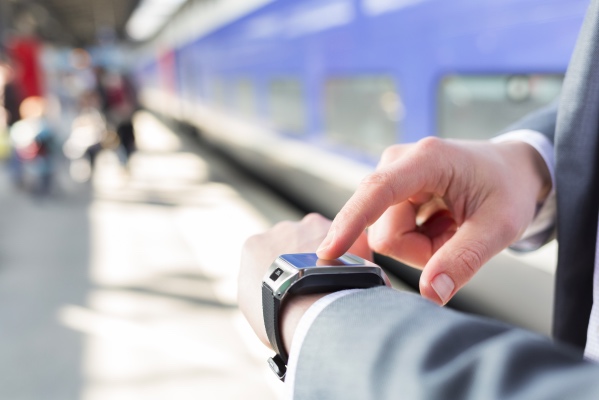Coffee and tea aficionados can now reload their Starbucks Card using Apple Pay – right on the Apple Watch. According to Rachel Green of Business Insider, the upgrade eliminates a step for Apple Watch’s Starbucks app users.
“Before this feature was introduced, Apple Pay users could only reload their balance through the iPhone app — not on the Watch,” Green explained. “The ability to reload their app’s balance from the Watch, and then use it to pay, rather than having to switch between the iPhone and the Apple Watch, makes for a better user experience.”

As Green notes, the convenience that Apple Watch integration offers could encourage customers to pay via the app more frequently — which in turn could boost interaction with Starbucks Rewards. To be sure, Starbucks counts over 13.3 million active rewards program members – a group that tends to visit more often and spend three times more than nonmembers.
“Mobile wallet adoption is lagging across the board in the US. In order to improve that, customers need incentives to adopt these wallets. Starbucks, which is the second-most-popular wallet for in-store purchasing in the US, could help normalize these payments,” she continued. “The partnership could drive more Starbucks users, who are familiar with mobile payments, to try Apple Pay to reload their balance, and then continue to engage with it in the future. As such, Apple could leverage its partnership with Starbucks to drive usage of Apple Pay up and improve adoption and engagement of its own wallet by growing Starbucks payments on its devices.”
In related news, IDC analysts project that the popularity of wrist-worn devices – including watches and wrist bands – will continue to drive the wearables market forward. More specifically, watches, including both smartwatches (capable of running third-party applications) and basic watches (which do not run third party applications), will comprise the majority of wearable devices throughout the forecast.
“Apple and Android Wear will drive the market forward, but the market will also see new entrants running on their own proprietary operating systems (i.e., Fitbit’s own Java-based operating system and Garmin’s Connect IQ),” IDC analysts wrote in a recent press release.

“[Moreover], basic watches will see their volumes swell past smartwatch volumes by adding wearable technology to traditional watches. Altogether, the diversity of watches and experiences will appeal to a similarly diverse audience with differing tastes and preferences, leading to a larger total available market and growing volumes each year.”
Meanwhile, Gartner analysts forecast that 310.4 million wearable devices will be sold worldwide in 2017, representing an increase of 16.7% from 2016. In addition, sales of wearable devices are expected to generate revenue of $30.5 billion in 2017. Of that, $9.3 billion will be from smartwatches, which are on track to achieve the most significant revenue potential among all wearables through 2021, reaching a total of $17.4 billion.
As we’ve previously discussed on Rambus Press, wearable vendors and banks have been piloting and launching a number of solutions that employ multiple types of near field communication (NFC)-enabled form factors, including fobs, rings and stickers in addition to smartwatches and wristbands. Although wearable payments are considered an evolving market, gradual growth is projected as the industry works through multiple issues, including upgrading point-of-sale (POS) terminal infrastructure, consumer comfort with wearables and refining the frictionless payment process.
Interested in learning more about the future of mobile payments? You can check out our eBook on the subject below and our article archive on the subject here.

